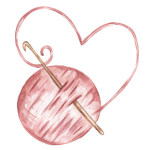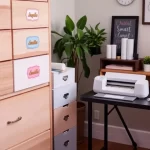How to reinforce fabric edges is a fundamental skill that protects your textile projects and helps them last longer.
Whether you’re sewing clothes, accessories, or home items, the edges are often the first parts to wear out or fray.
Unfinished seams can compromise the structure of your work and take away from the final look you’ve worked so hard to achieve.
Reinforcement methods are simple to learn and can be done by hand or with a machine, depending on what you have available.
In this guide, you’ll discover easy and effective ways to strengthen fabric edges and create pieces that are both beautiful and durable.
Why Reinforcing Edges Matters
Every time fabric is used, washed, or exposed to movement, the edges become a vulnerable point. Without proper reinforcement:
- Seams may open with time
- Threads can fray or unravel
- The overall shape of the item can shift
By reinforcing the edges, you maintain structure, prevent wear, and give your project a clean, professional finish. This step is especially important for items that are handled frequently, such as bags, table linens, or children’s clothing.
Tools and Materials You’ll Need
You don’t need fancy equipment to get started. Here are the basic supplies for most edge-reinforcing techniques:
- Fabric scissors or rotary cutter
- Thread matching your fabric
- Sewing needles or sewing machine
- Pins or fabric clips
- Measuring tape
- Iron and ironing board
- Optional: bias tape, fusible interfacing, overlock machine, pinking shears
If you’re working with delicate or expensive fabric, consider investing in high-quality thread and a fine needle to avoid damage.
Reinforcement Techniques by Skill Level
Let’s break down the most effective edge-reinforcing methods into two categories: hand-sewing and machine-sewing.
Hand-Sewing Methods
These are ideal for small projects, delicate fabrics, or when a sewing machine isn’t available.
1. Blanket Stitch (Caseado)
Great for medium to thick fabrics like felt or denim. Simply fold the edge under and use a looping stitch to bind the raw edge. This adds both strength and decorative flair. Ideal for children’s toys, decorative items, and craft projects.
2. Overcast Stitch by Hand
This is a simple looping stitch sewn along the edge to prevent fraying. It mimics a machine zigzag and is excellent for most woven fabrics. Use short, even stitches for better durability.
3. Blind Hem Stitch
Mostly used in garment construction for invisible hems, it also helps in securing folded edges without visible stitching on the front. Great for skirts, trousers, and curtains.
4. Bias Tape Binding (Hand-Applied)
Encasing raw edges in bias tape adds reinforcement and a clean finish, ideal for necklines, armholes, or unlined seams. This method works well with curved edges where traditional hemming is challenging.
5. Interfacing and Tacking
Apply a lightweight interfacing on the edge, then secure with small hand stitches for extra stability on areas like buttonholes, collars, or cuffs.
Machine-Sewing Methods
Machine techniques are faster and more consistent, especially for larger pieces.
1. Zigzag Stitch
Run a zigzag stitch close to the raw edge to keep it from fraying. You can also pair it with a folded edge for stronger results. Use this method on almost any woven fabric.
2. Overlock/Serger Finish
An overlock machine trims and binds the fabric edge in one pass. It’s the gold standard for professional finishing and durable seams. Ideal for garments that will be washed often.
3. Double Fold Hem with Straight Stitch
Fold the edge over twice (¼ inch each), press, and sew with a straight stitch. This clean hem hides the raw edge and adds a layer of strength. Perfect for curtains, napkins, and garments.
4. Bias Tape (Machine-Applied)
Use a pre-folded bias tape and attach it along curves or exposed seams for a colorful and strong finish. A walking foot can help maintain even stitching.
5. French Seam
This encloses the raw edge inside a double seam—great for sheer or lightweight fabrics and garments. It creates a neat look inside and out.
Choosing the Right Technique
Your choice depends on the fabric type, purpose of the item, and your tools. Here are some examples:
| Fabric Type | Recommended Methods |
|---|---|
| Lightweight cotton | French seams, zigzag stitch |
| Linen | Overcast stitch, bias tape |
| Denim | Double fold hem, blanket stitch |
| Silk or satin | French seam, bias binding |
| Felt or fleece | Blanket stitch, overlock |
| Jersey or knits | Overlock, zigzag stitch with stretch thread |
Tips for Clean and Durable Finishes
- Press the fabric before sewing to get accurate folds and neat edges
- Test on scraps first to adjust stitch settings or try out finishes
- Use matching thread or contrasting for decorative effect
- Trim frayed edges before finishing to avoid lumps
- Don’t skip pinning—secure edges well before stitching
- Use fabric-specific needles to prevent puckering or damage
If you’re working on stretch fabrics, consider using a stretch stitch or twin needle to maintain elasticity.
Reinforcing fabric edges isn’t just about making your work look good—it’s a core part of producing long-lasting, reliable pieces. Whether you’re creating a handmade pillowcase or tailoring a garment, a strong and neat edge can make all the difference.
By learning and applying the right techniques, you’ll not only increase the lifespan of your creations but also elevate the quality of your craftsmanship. Start with basic methods and gradually explore more advanced finishes as your confidence grows. Your projects—and those who use them—will thank you for it.



